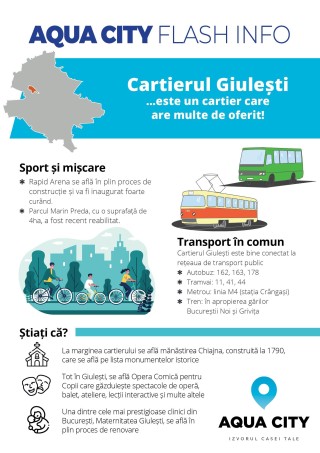Located in the northwestern part of the capital, the Giulesti neighborhood is located on the administrative territory of two sectors: 1 and 6. It is bounded on the east by bd. Constructorilor, to the north of Calea Giulesti and Butuceni street, to the northeast of the Triajul 16 Februarie railway lines, to the northwest of the railway from Rosiorii de Vede, and to the south and southwest of the river Dambovita and Lacul Morii.
The neighborhood includes two distinct areas: a rural one (also known as Giulesti-Sarbi) and an urban one (after the Pasteur Institute, continuing the route on Calea Giulesti).
The second area has become attractive to investors, especially in recent years, who have begun to build new homes here, either on vacant land or on the site of old houses in an advanced state of degradation. These new homes have been equipped with all the necessary facilities, which has led to a significant improvement in the infrastructure of public water, sewerage or gas services. At the same time, the area is well connected to the public transport system, being served by several bus lines and the tram line that crosses Calea Giulesti, being also located near the Crangasi metro station. At the same time, in the neighborhood there is the Marin Preda park, recently rehabilitated, in an area of 4 ha, the Giulesti stadium - a symbol of the Romanian sport, as well as the gym of the CS Rapid club. Also here is the Giulesti Obstetrics and Gynecology Hospital (also known as the Giulesti Maternity Hospital), the Comic Opera for Children or the Chiajna Monastery, a historical monument dating from the end of the 18th century.
The proximity to Gara de Nord means that there are two high schools with a railway profile in the area: Dinicu Golescu Technical College and Mihai I Railway Technical College. Other educational institutions in the area include Marin Preda Theoretical High School, as well as several general schools.

